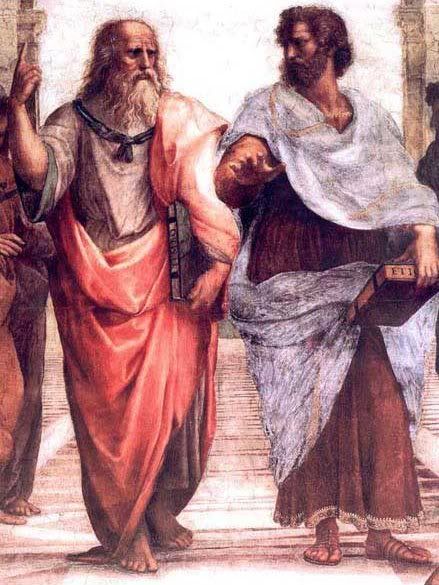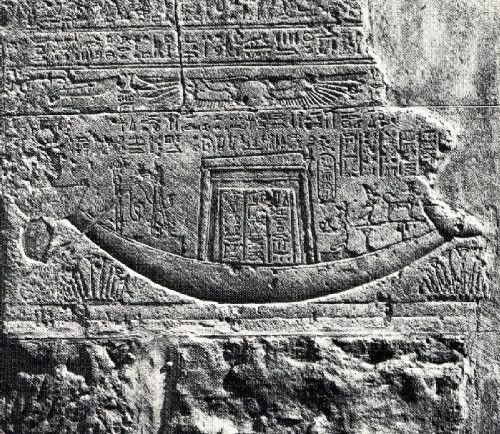| Reply to Thread New Thread |
|
|
#1 |
|
|
I feel compelled to write about the derivation of the story of Atlantis, and its true meaning as it was understood at the time. This is because Atlantis has come up in another thread and, just like Christian fundamentalists, it seems that there are now New Age fundamentalists that are reading this myth as history, and thus causing no end of confusion. We’ve just got to the end of 2,000 years-worth of similar confusion caused by Christians taking metaphor literally, so I hope we’re not in for another 2,000.
Anyway, in order to understand about Atlantis, one has to understand something first about Plato. The legend of Atlantis, first told by Plato in Timaeus, was an Egyptian Mystery story and not Egyptian history. Plato was initiated into the Mysteries in Egypt. This is from Plato's biographer, Thomas Taylor: "Plato was initiated into the 'Greater Mysteries' at the age of 49. The initiation took place in one of the subterranean halls of the Great Pyramid in Egypt. The Isiaic table formed the altar, before which the Divine Plato stood and received that which was always his, but which the ceremony of the Mysteries enkindled and brought from its dormant state. “With this ascent, after three days in the Great Hall, he was received by the Hierophant of the Pyramid (the Hierophant was seen only by those who had passed the three days, the three degrees, the three dimensions) and given verbally the Highest Esoteric Teachings, each accompanied with its appropriate Symbol. After a further three months' sojourn in the halls of the Pyramid, the Initiate Plato was sent out into the world to do the work of the Great Order, as Pythagoras and Orpheus had been before him." But Plato has been much misunderstood over the years. The rot set in with his student Aristotle. In the gardens of his academy, Plato taught the same Mysteries that he learned in Egypt through a wordless initiation. Unfortunately, though, for reasons best known to himself, he didn’t teach it to Aristotle, and it’s Aristotle’s teachings and vision (for what it was worth) about ethics and such like, that has come down to us —without anything about how to achieve the divine inspiration that produced such thinking.  Aristotle's education was entirely different from that of Plato. Aristotle did not know the secret science of the 'initiates.' We are therefore fully entitled to consider Plato as the last exponent and philosophic interpreter of 'ancient wisdom.' Andrew Efron, The Sacred Tree Script, 1941. The story of Atlantis was an Egyptian Mystery story ... this means it was part of the Egyptian Mystery teachings, and thus was an allegory. It can be found in hieroglyphics and pictures on the walls of various tombs as part of the Book of the Heavenly Cow. Proclus tells us that the 4th century BC Greek philosopher Crantor reported that he, too, had seen the columns on which the story of Atlantis was preserved as reported by Plato: the Saite priest showed him its history in hieroglyphic characters. The story of Atlantis is about the drowning of the seven pole stars (aka seven islands of Atlantis), one after the other. It is about Ra’s sun boat or ark as it traverses these celestial waters in full spate, carrying the deceased to their destination. This is why it appears on the walls of tombs.  So let’s look at the etymology of the word “Atlantis”. Egyptian, in its early stages, had no letter ‘l’. So originally the word ‘atr’ (or “atl” as it later became), had several meanings in relation to water. “Atru” is the water, the water flood, the water boundary, limit, measure, frontier, embankment. But when ‘r’ became ‘l’, it was changed to ‘atl’. Add to that the root word ‘antu’ or ‘anti’, which equals a division of land. Thus Atlantis is a compound of ‘atl’ and ‘anti’, with a Greek ‘s’ added on to the end, meaning ‘the land divided by water’. We know that Plato described Atlantis in Timaeus as a land divided by circular canals. Artist's impression from Plato's description:  This is from Gerald Massey’s Egypt The Light of the World: “Now the earliest nomes of Egypt were seven in number, and these were the seven territories marked out, limited and bounded by the ‘atlu’ as river, canal, conduit or water boundaries. In the valley of the Nile, the land was bounded first by water as the natural boundary, and seven nomes would be enclosed by seven ‘atlu’, long before the land limit was marked out by boundary stones or stelae.” These seven earthly nomes were named after the seven celestial astronomes, which were the seven pole stars. The ancient Egyptians knew that the Earth at different times, because of the precession of the equinoxes, had different pole stars and there were seven in all. ... Massey continues: “Sufficient mythical matter for a legend of the deluge and the ark may be found in the 64th chapter of the Ritual. It is recorded in the rubrical directions appended to the chapter that it “was discovered on a plinth of the god of the Hennu-bark (Ra in his sun boat) by a master builder of the wall in the time of King Septi the victorious {about 6- 7,000 years ago]. “We learn from this that the bursting forth of the waters in an overwhelming flood was based upon the natural fact of the inundation in Egypt. The imagery has been reproduced in heaven, and also in Amenta (the Underworld)... In this chapter, there is an application of deluge imagery to the sun in the mythos and the departed soul in the eschatology. The subject matter is very ancient. It belongs to that time when Sut was a pre-Osirian form of Good Being, in relation to the pole, the dog star and the inundation of the Nile. Here the deluge of the inundation is the deluge of destruction directed against the workers of evil. In short, it does what the inundation did for Egypt in washing away the results of the drought ... Thus, 6-7,000 years ago the so-called ‘deluge legend’ was ancient in Egypt, and it belonged to the time when Sut, in command of the waters had not lost his place in glory, and his deluge was employed to destroy the Sebau, the Sami, the Apap-dragon, the long-armed ones and other evil enemies of man.” So that is why this story was written and painted on the walls of tombs. The story about Atlantis was about a sacred journey or divine adventure that the soul of the deceased would have to undergo as he sailed on Ra's Ark down the White Nile (the Milky Way), through the floods of the “atl-anti”, by which he was piloted by the 'anti fish'. In the Anti Lake, he would fight and conquer the Apap monster and thus eventually reach the Underworld of Amenta. Here, his heart was weighed in the balance against a feather in the Judgement Hall of Ma'at, and if he was not found wanting, he could then go on to the heavenly abode. This is the real meaning of the story of the seven islands of Atlantis or the heptanomis (seven nomes) of the "atl-anti". |
|
|
|
|
#2 |
|
|
Egyptian, in its early stages, had no letter ‘l’. So originally the word ‘atr’ (or “atl” as it later became), had several meanings in relation to water. “Atru” is the water, the water flood, the water boundary, limit, measure, frontier, embankment. But when ‘r’ became ‘l’, it was changed to ‘atl’. How long ago was the 'l' added to the Egyptian language? Could it be on the order of the distance in time between the migrations to Asia? |
|
|
|
|
#3 |
|
|
|
|
|
|
|
#4 |
|
|
|
|
|
|
|
#5 |
|
|
Oh, I see ... well, we can't get any language that far back anyway, whether they came Out of Africa or from elsewhere. The earliest writings are all around 3,000 BC (Egyptian, Indian and Sumerian).
Anyway, I found this, and it seems to make sense: http://egyptologist.org/discus/messages ... 1046980256 Normally the lion glyph stands for rw (GARDINER E 23). During the Ptolemaic Period [around 300 BC - Ish] the need arose for an L-sign. Apparently Egyptian /r/ sounded somewhat like /l/ (as in Japanese), so they picked the lion... The system used by modern Egyptian jewellers to produce cartouches with tourists' names is the Ptolemaic one, of course. Hope that helps. |
|
|
|
|
#6 |
|
|
|
|
|
|
|
#7 |
|
|
Yeah, in the excitement of my flash of brilliance i didn't consider that writing isn't all that old. On the other hand, since we're talking just a few thousand years ago then the Far East was definitely settled long before then. |
|
|
|
|
#8 |
|
|
At least there is a chance of a partial answer to that question. Since the proposed 'speech gene' has been found in HN i wonder if DNA will ever be extracted from H. heidelbergensis or H. rhodesiensis? i'm not too sure about how long DNA stays intact, but a page on found on Wikipedia stated there was an estimate of 1mya as the absolute oldest DNA could still be recovered. This assumed perfect preservation conditions such as being frozen the entire time. That part of the article was uncited, but who knows maybe someday an Oetzi will be found that isnt' HS.
|
|
|
|
|
#9 |
|
|
Here's a Wiki gloss on Peking Man, "commonly" accepted to be erectus, But man o man, talk about being on the borderline............ http://en.wikipedia.org/wiki/Peking_Man hoka hey john |
|
|
|
|
#10 |
|
|
Egyptian glyphs have no vowels Ish, moder names as used by egyptologists are pure fiction.
For example, the cartouche for Rameses is RMSS. The Ra comes from the name of the sun god, which when Petrie wrote was spelt Re. Like wise the sun god duality Amun-Ra was in Petrie's day Amon, and Ramses was Rameses or vice-versa. I have this idea that one a time traveller will vist ancient Egypt and not understand a word! Roy. |
|
|
|
|
#11 |
|
|
Yes, I heard that too, Dig. But I think the vowels they came up with are more of an educated guess than pure fiction, especially as it's a picture language.
I imagine that they could have been influenced by Greek translations. The Greeks took on the whole Egyptian mythology and adopted it, so I've heard. It's a problem to know for sure, because the language changed throughout the different dynasties. But here we also have evidence that they used Akkadian to compare it with too, which was the diplomatic language used in the time of Amenhotep III and Akhenaton. http://www.friesian.com/egypt.htm Indeed, although the Egyptians did not write vowels in Egyptian words, there is evidence about what the vowels were in many words. But the evidence is for different stages of the Egyptian language. For most of Egyptian history the language written in actual hieroglyphics or in its cursive counterpart, hieratic, was the literary language initiated in the XII Dynasty (1991-1786) of the Middle Kingdom. That is called "Middle Egyptian." In hieroglyphics or hieratic, therefore, one is only likely to encounter either Middle Egyptian or the earlier literary form of the language, Old Egyptian, the language spoken in the Archaic Period (I & II Dynasties, c. 3100-2680) and the Old Kingdom (III-VI Dynasties, 2680-2159). While Sir Alan Gardiner, in his great and indispensable Egyptian Grammar [Oxford University Press, 1927, 1964], says that Middle Egyptian was "possibly the vernacular of Dynasties IX-XI," Stephen Fryer has brought to my attention recent research to the effect that the literary language of the XII Dynasty was in some measure an artificial attempt to return to the forms of Old Egyptian. Since the political project of Egyptian Kings was always to restore things "as they were in the beginning," this is not surprising. Middle Egyptian, therefore, may have something like the status of Classical Sanskrit, which restored and fixed the forms of the language of the Vedas but could not undo all the changes that had already occurred in the spoken language. Although Middle Egyptian became the literary and written language, the spoken language continued to change. The language of the New Kingdom (XVIII-XX Dynasties, 1575-1087) and much of the Third Intermediate Period (XXI-XXIV Dynasties, 1087-715) is then called "New" or "Late Egyptian." By the Ramessid Period (Dynasties XIX & XX), most hieratic documents are in Late Egyptian. The best evidence of the pronunciation of Late Egyptian, however, is from the documents found in the diplomatic archives of Amenhotep III and Akhenaton at Amarna, for these documents were kept in Akkadian, not in Egyptian. Akkadian was the diplomatic language of the day, essentially the same language as its two daughter languages, Babylonian and Assyrian; and its system of writing, cuneiform, represented vowels. Late Egyptian grammar also begins to be revealed by hieroglyphic inscriptions during the reign of Akhenaton, when the spoken language briefly replaced Middle Egyptian. Thus, while Old and Middle Egyptian did not have a definite article ("the"), Late Egyptian does, p3, later pronounced "pi" or "pe" in Coptic -- though now it appears that this change had already begun in the actual spoken language of the XII Dynasty. I got the explanation of 'atl' 'anti' 's', from Gerald Massey, who was one of the original Egyptologists. It's here, on page 549 of Egypt the Light of the World, which luckily is online: http://books.google.com/books?id=HgQnqz ... #PPA549,M1 |
|
|
| Reply to Thread New Thread |
«
Previous Thread
|
Next Thread
»
| Currently Active Users Viewing This Thread: 1 (0 members and 1 guests) | |
|
|






 Linear Mode
Linear Mode


